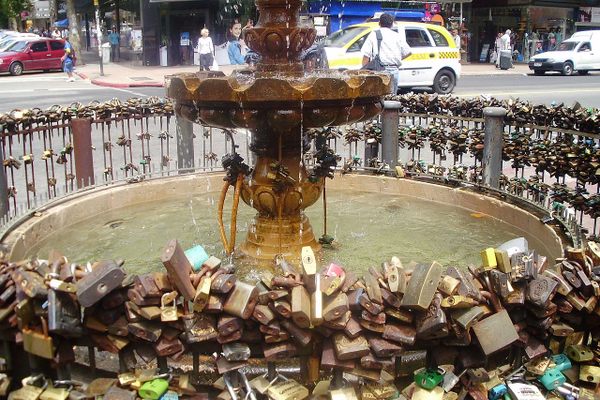Estadio Centenario
This historic stadium was built to host the first-ever FIFA World Cup.
Built to host the first-ever FIFA World Cup in 1930, Montevideo’s Estadio Centenario is today considered one of the most historic soccer stadiums in the world.
When the Fédération Internationale de Football Association (FIFA) announced plans to hold the first World Cup in 1930, six countries applied to host the event: Italy, Sweden, Spain, the Netherlands, Hungary, and Uruguay. Despite being the only non-European country to apply, Uruguay won the bid.
At the time, the Uruguayan national team was a soccer powerhouse and the reigning Olympic champion. The country would also celebrate 100 years of independence in 1930, a historic landmark not lost on FIFA.
But not everyone was keen on holding the inaugural World Cup in South America, especially the Europeans. Of the 13 nations that took part, nine were from the Americas. Many European nations rejected invitations because of the three-week voyage required to get to South America. And some were simply appalled that the inaugural event wasn’t being held in Europe. England, Ireland, Scotland and Wales, meanwhile, had withdrawn from FIFA in 1928 due to a dispute over payments to amateur players, and so were ineligible (although six British born players did manage to get into the USA team). In the end, Belgium, France, Yugoslavia, and Romania were the only Old World nations to attend.
In 1929, while FIFA worked on the attendance issue, Uruguay had a pressing problem of its own: Where exactly was it going to host the event? A handful of small stadiums already existed in Montevideo, but something larger was required. And so, in 1929, workers, many of whom were immigrants, began construction on the 90,000-capacity Estadio Centenario, named in honor of the country’s 100 years of independence.
It was completed in just nine months, but that was still five days too late. The rainy season and a hectic construction schedule had caused delays, and so the opening matches of the inaugural World Cup took place at Estadio Parque Central and Estadio Pocitos, which at the time had capacities of 20,000 and 1,000 respectively.
After a frustrating few days, Estadio Centenario—at the time the largest football stadium outside the British Isles— finally hosted its first-ever match. It was a positive start, with Uruguay beating Peru 1-0. The stadium went on to host 10 of the 18 matches in the World Cup, including both semi-finals and the final. And on July 30, 1930, Uruguay won the first ever FIFA World Cup when they defeated Argentina 4-2 in the final.
Estadio Centenario has remained the home ground of the Uruguayan national team ever since that triumphant beginning. It has also hosted the Copa América on four occasions. As the stadium is not owned by a club, other clubs can rent it for big games. As such, it often hosts high-profile national club matches and home-turf encounters in the Copa Libertadores.
On July 18, 1983, FIFA declared the Estadio Centenario a “Historical Monument of World Football,” the only stadium in the world to hold this title. Since its inauguration in 1930, the stadium hasn’t changed all that much. The capacity has dropped to around 60,000 as standing areas have been replaced with seating, and the stadium now houses the Museo de Futbol, a museum dedicated to the history of Uruguayan football. Apart from that, it has largely remained the same.
That, however, could change in the not too distant future. Uruguay wants to host the 2030 World Cup, 100 years after it hosted the inaugural event, so any bid it makes will have the weight of history behind it. But to strengthen the bid, Uruguay will need to invest in the national stadium. In April 2018, Uruguay’s sports secretary Fernando Caceres announced that six projects were being considered for a new stadium. In each of these proposals, the iconic 328-foot Tower of Tributes that rises up from the stadium’s Olympic Tribune stand will be preserved.
Some of the proposals, however, require the demolition of the stadium to make room for a new one, an idea that hasn’t been ruled out by Caceres. Understandably, many Uruguayans are vehemently opposed to this idea.
Know Before You Go
Estadio Centenario is located in the Parque Batlle neighborhood in central Montevideo. You can get there by taking any bus to the Tres Cruces bus terminal, from where it’s a 10- to 15-minute walk to the stadium. From the historic center, you can catch bus 115 or 143 and get off at the corner of Av. Dr. Americo Ricaldoni and Av. Italia, right next to the stadium. Check local listings for events, including soccer matches and concerts. The Museo de Futbol is open Monday to Friday from 10 a.m. to 5 p.m.




















Follow us on Twitter to get the latest on the world's hidden wonders.
Like us on Facebook to get the latest on the world's hidden wonders.
Follow us on Twitter Like us on Facebook